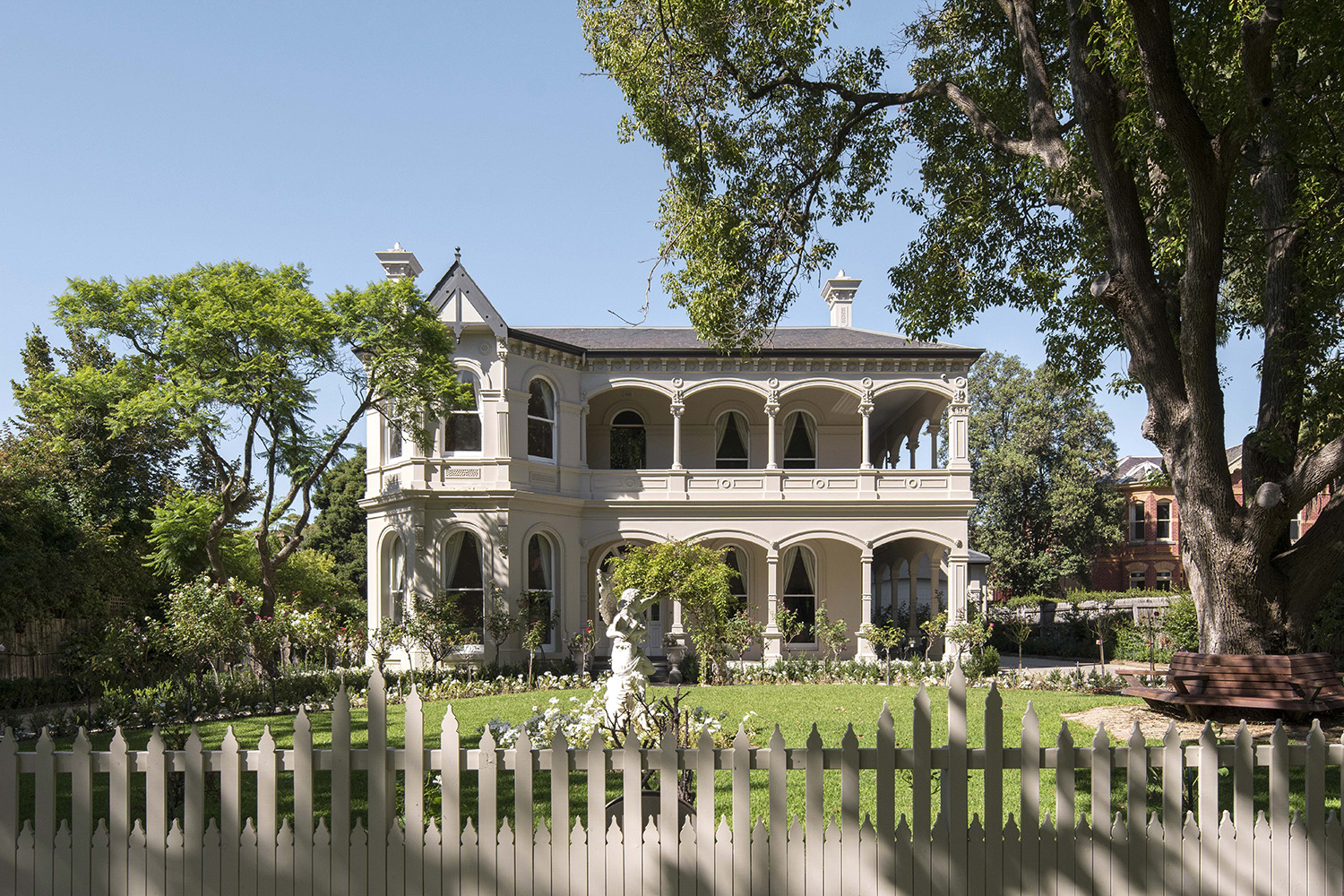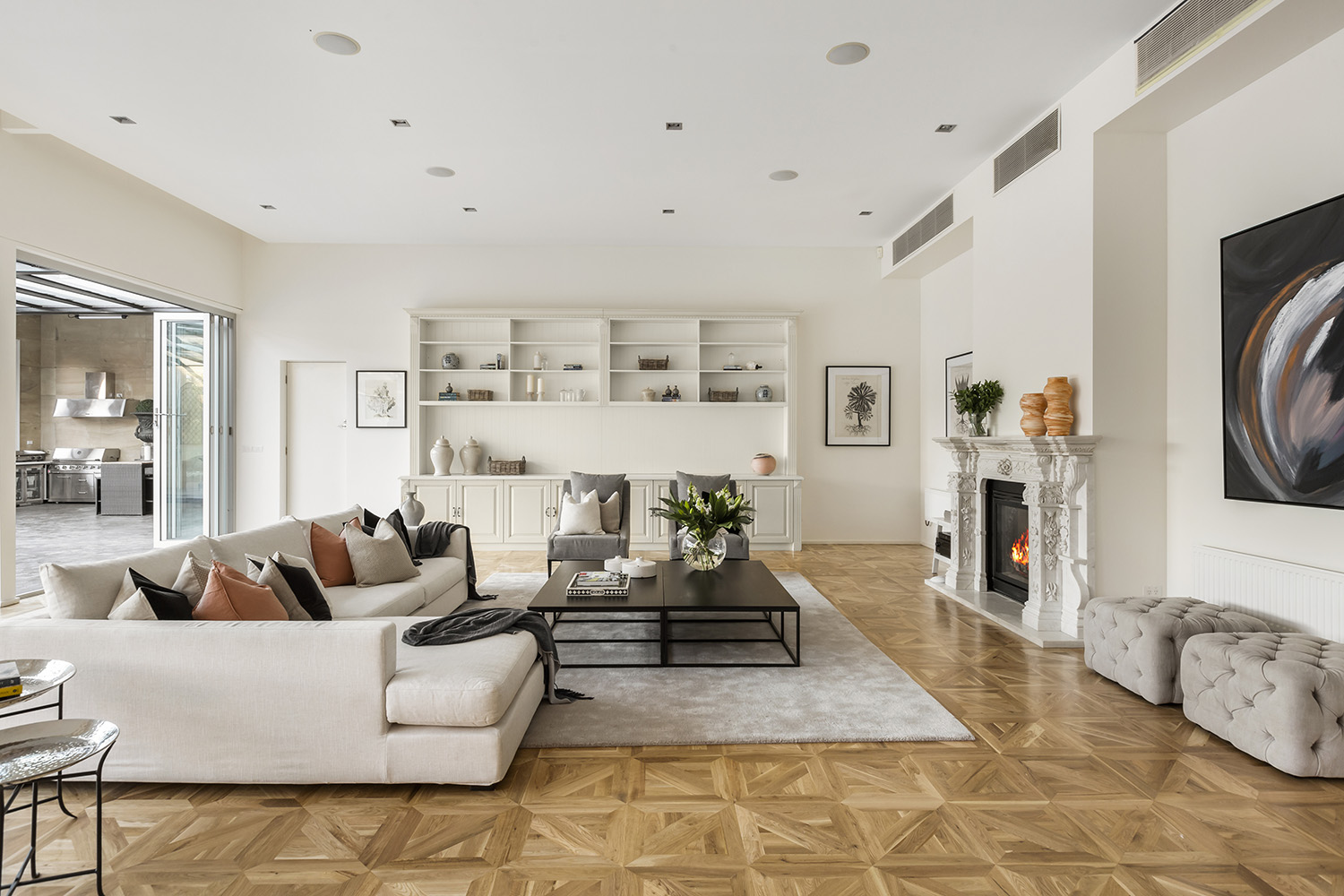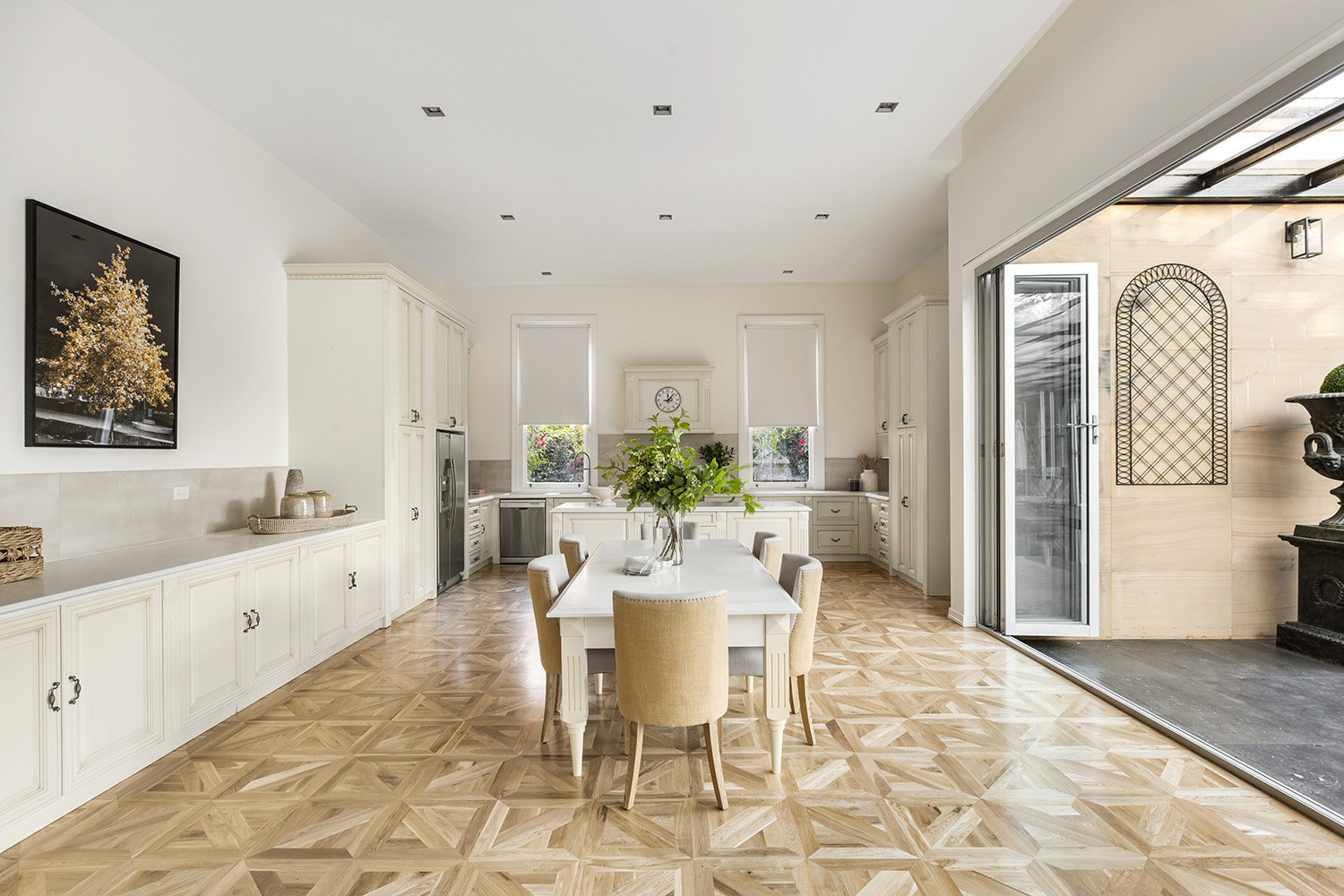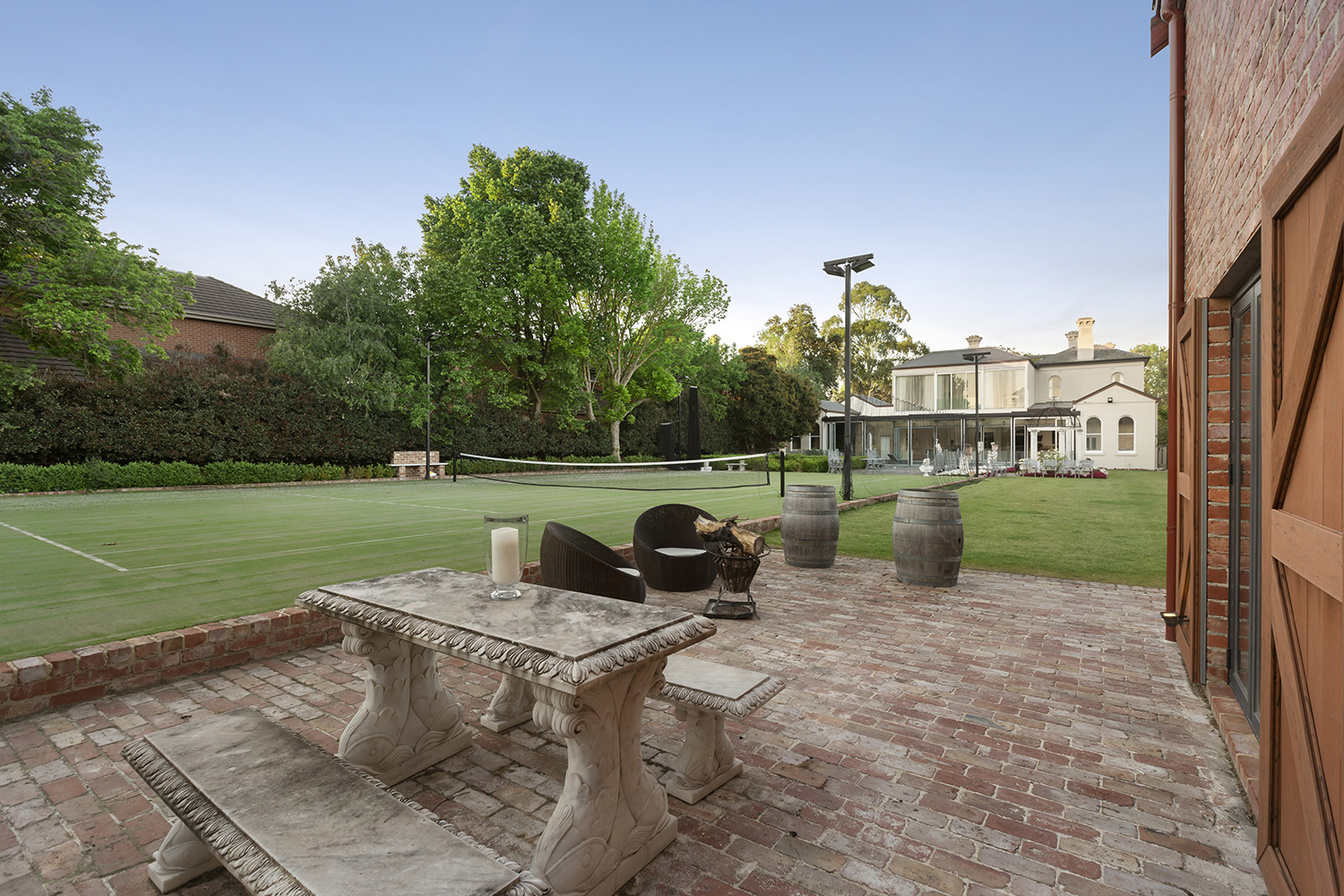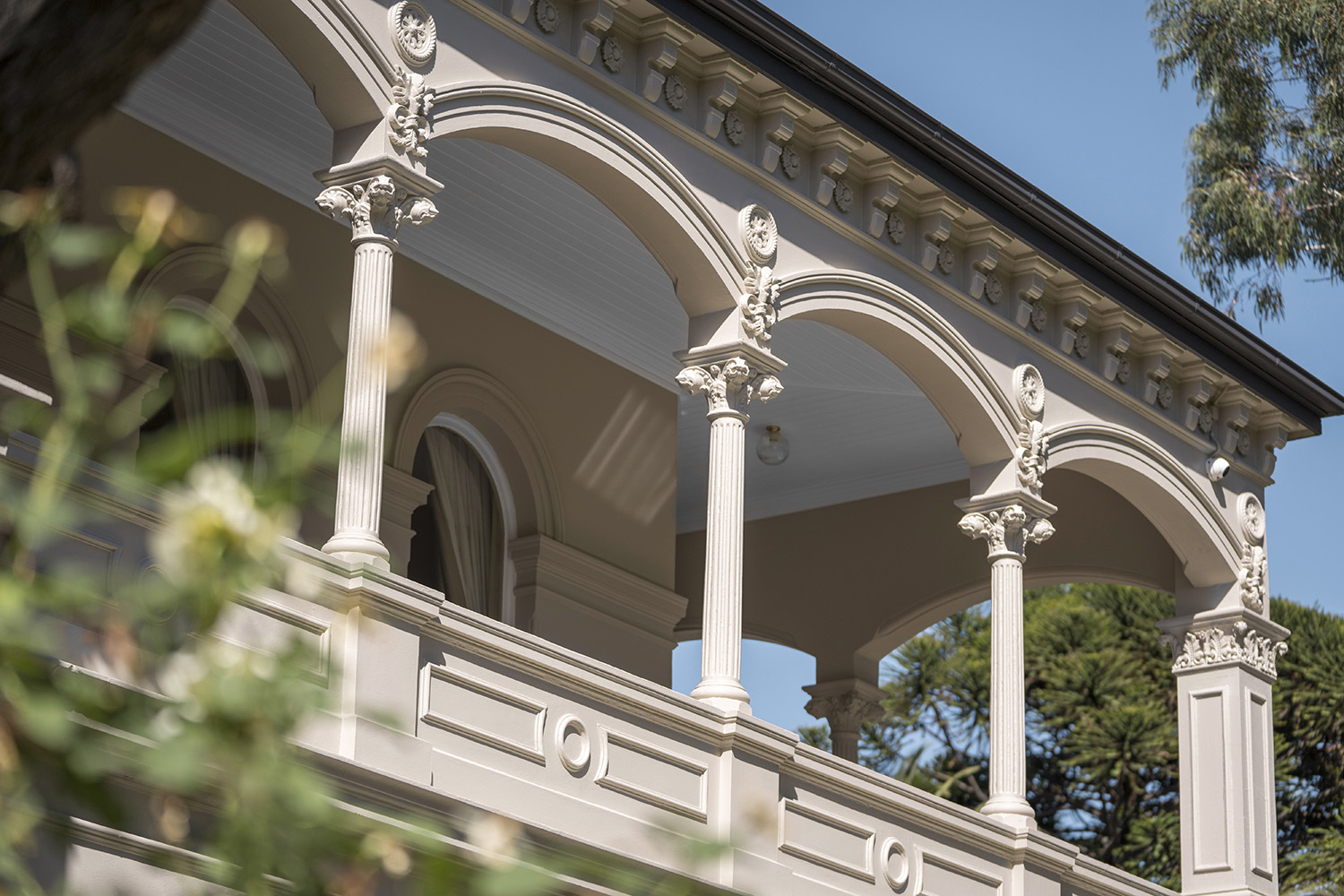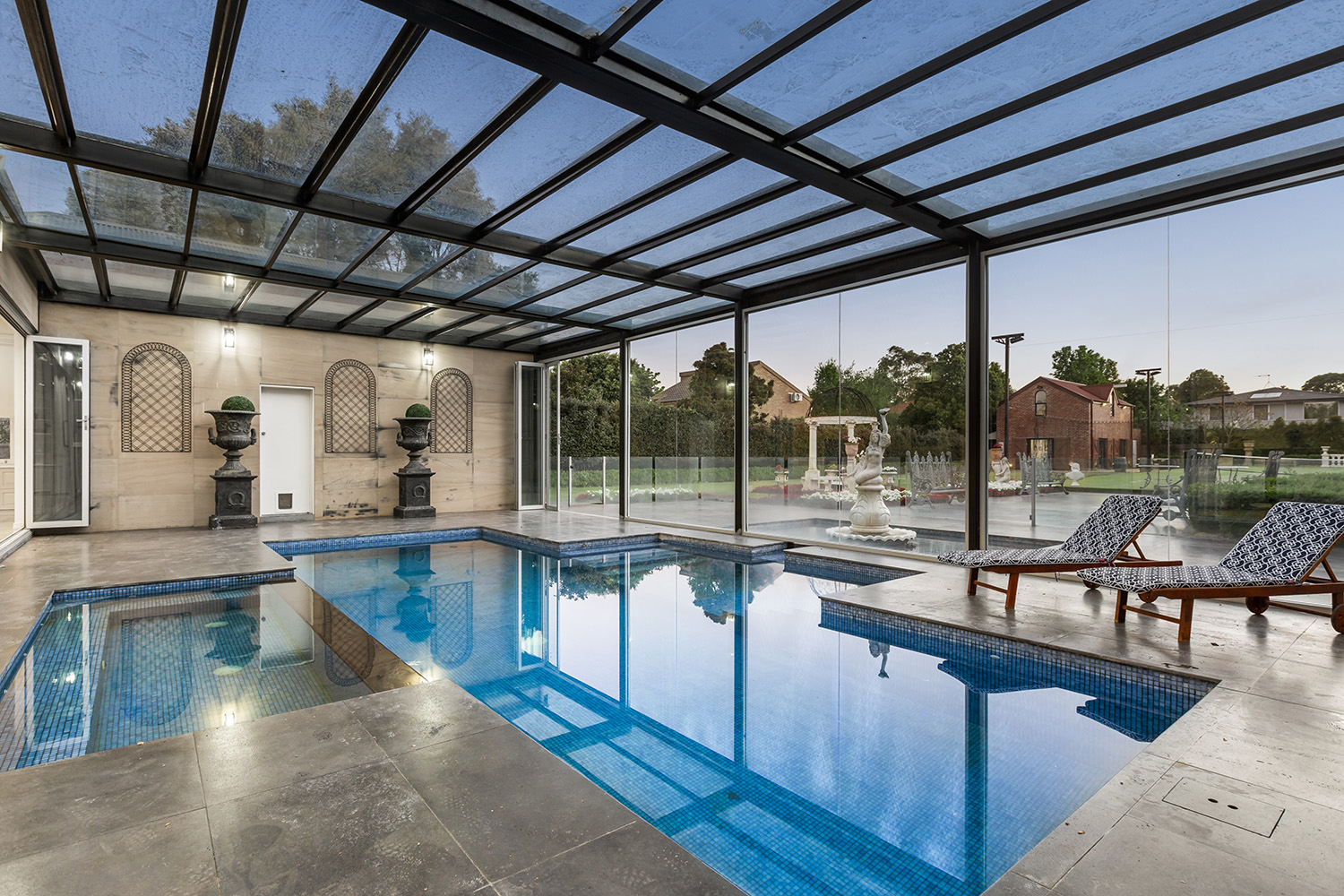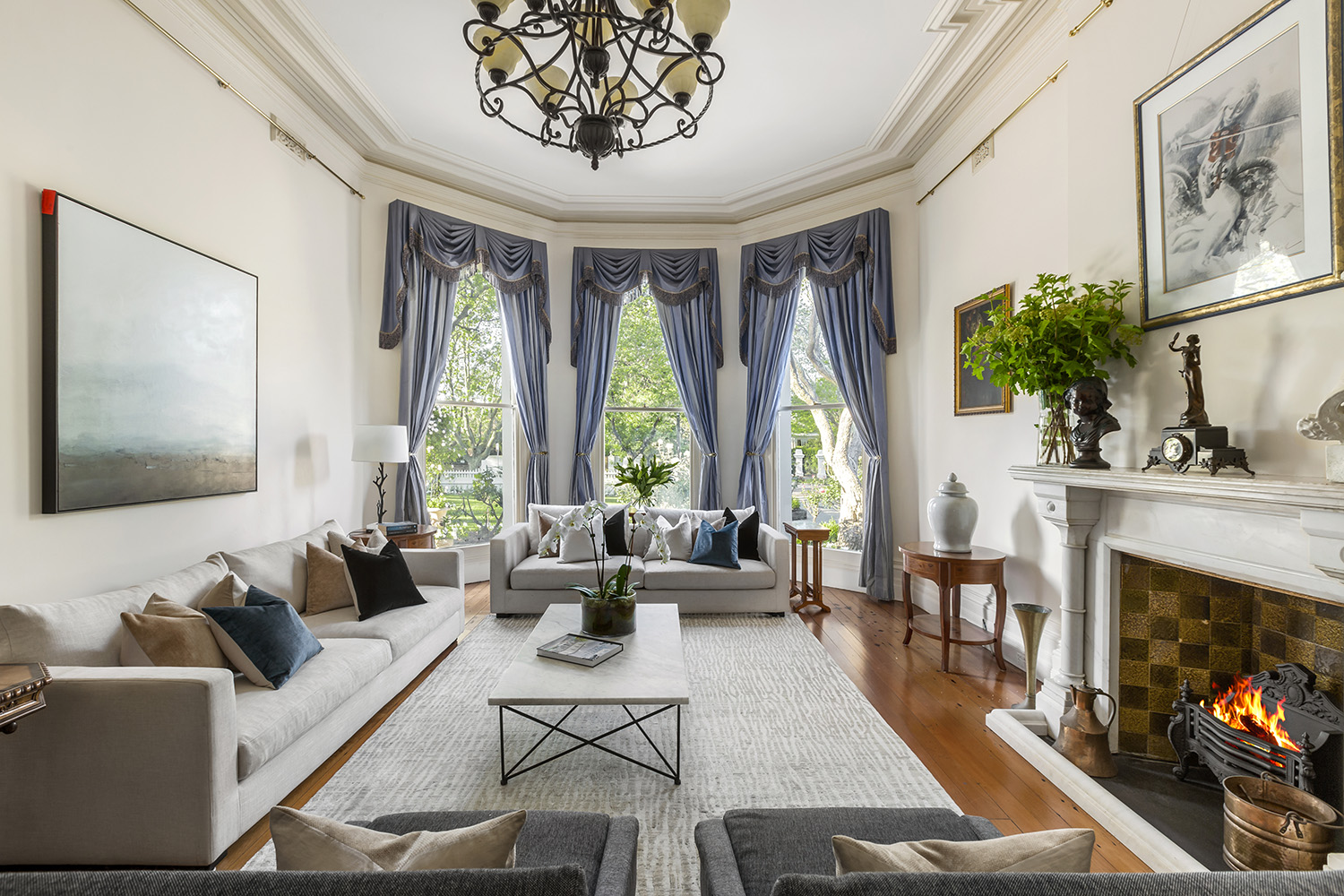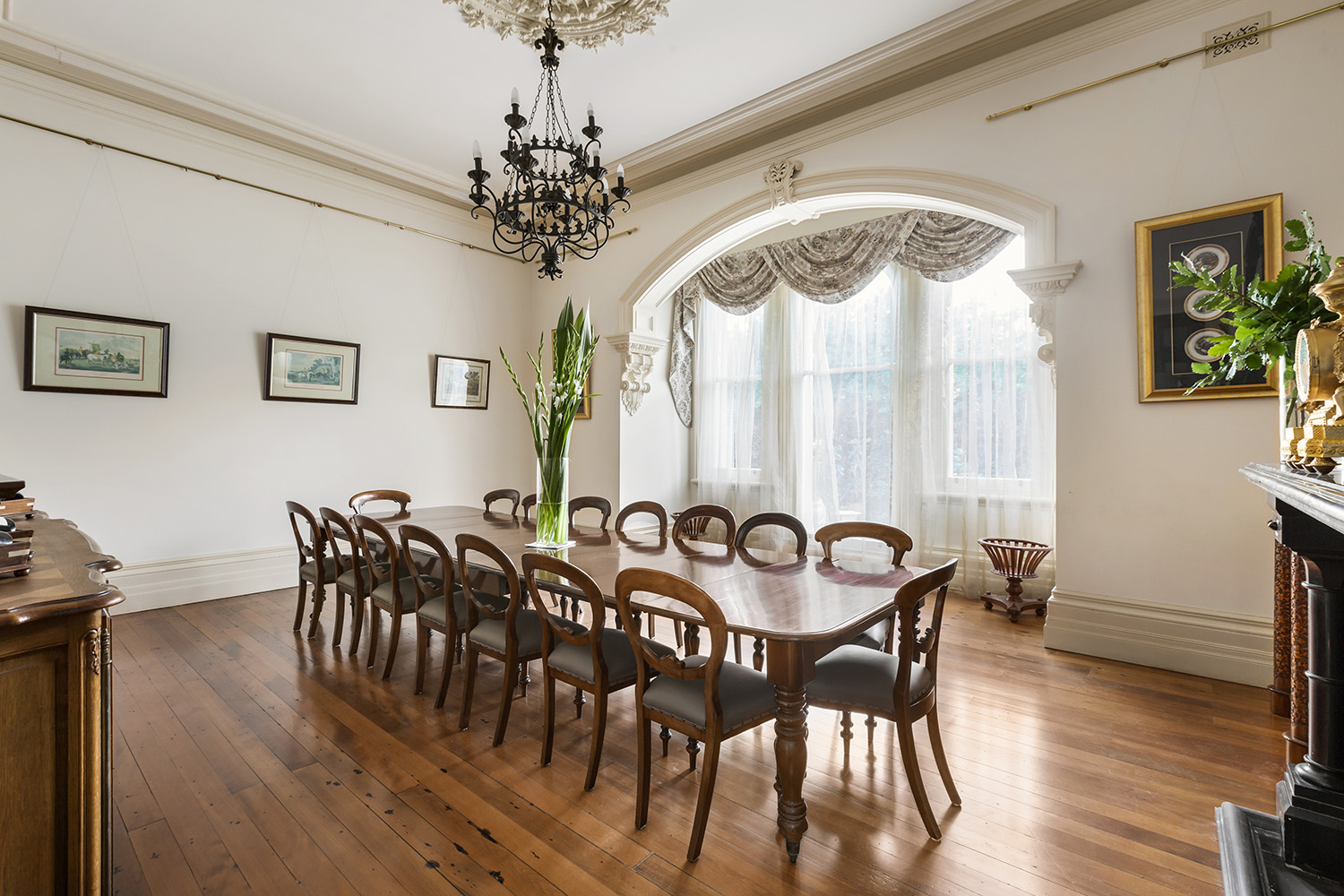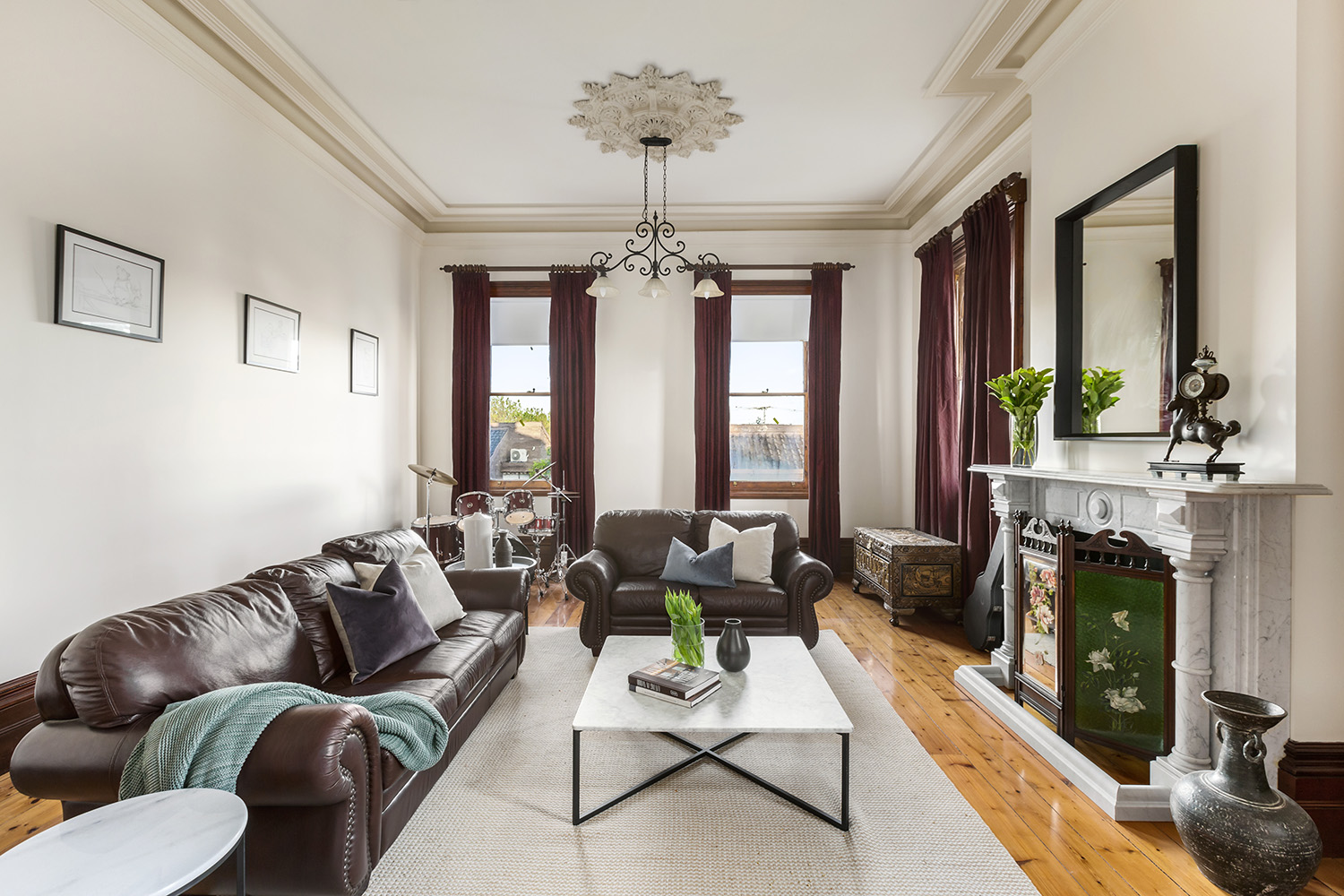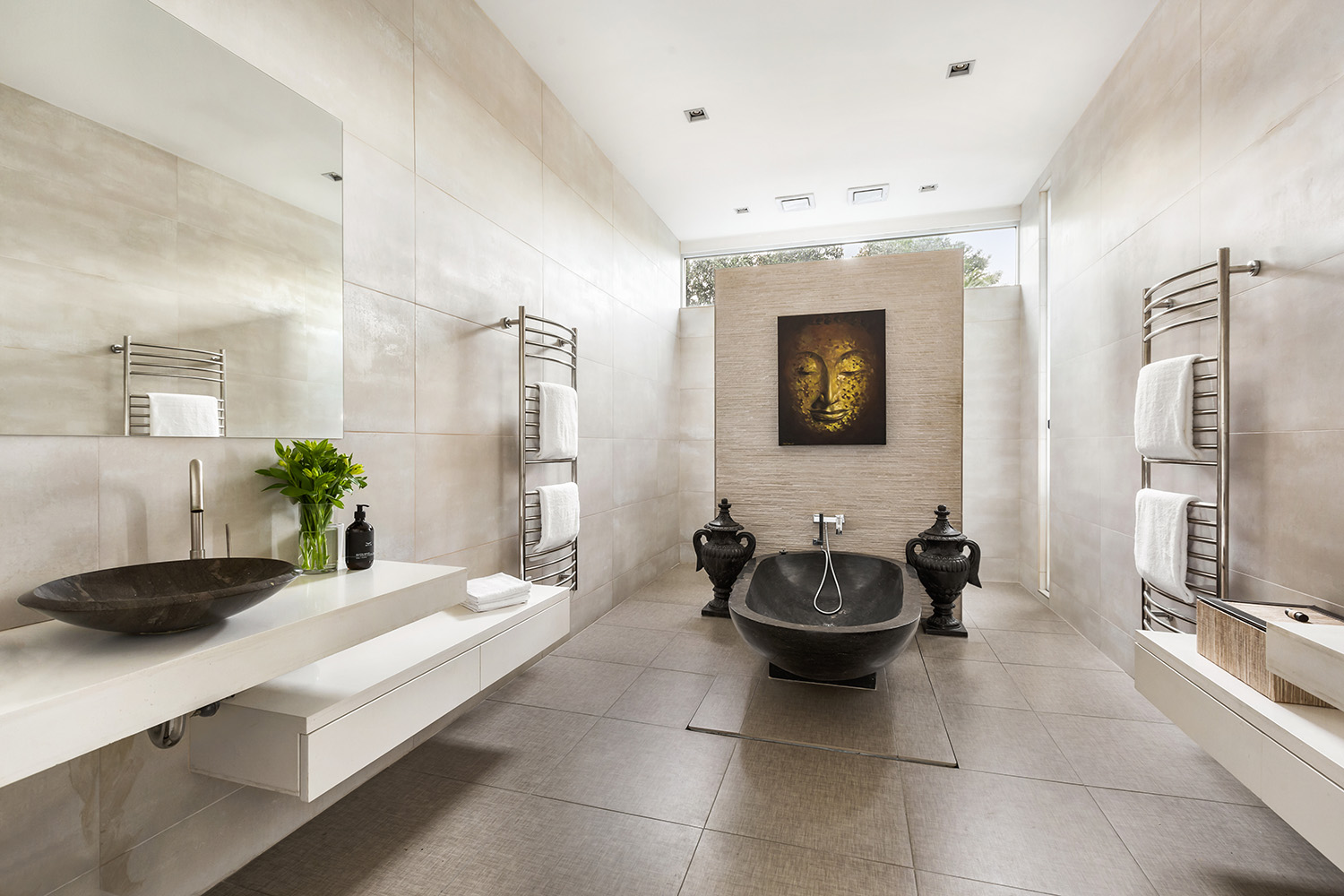Inside Kew’s Grand “Prague House”
The expansive pile is one of the finest Victorian-style homes in Melbourne.
The landmark Victorian slate-roofed residence, “Prague House”, formally known as “Dunboe” is arguably one of the finest period mansions in Kew, Melbourne.
Set back from Sackville Street, the circa 1880s-built home of 6-bedrooms, 6-bathrooms and 4-car parking is set on approximately 3400sqm of lush gardens with beautiful mature trees that speak to an era of gracious living undertaken on a grand scale.
Today, Prague House offers a heady combination of Victorian elegance — through the restoration of character features such as the original staircase, arches and mantles — and modern amenities for entertaining and living.
Inside, the home’s generous proportions are complemented by 4.5-metre ceilings and exquisite period attributes including ornate external rendering, stained glass windows and ceilings ornately decorated cornices, arches and columns.
Downstairs the entrance hall features a tessellated tile that leads to a large study, formal sitting room and dining room with an arched bay window and Black Belgian mantle alongside a billiards room. The home sees 12 (yes, 12) marble mantels, with eight of them in original condition.
Central to the home’s function is the expansive contemporary family domain boasting herringbone parquetry floors and incorporating a kitchen equipped with stone benchtops, an island bench and prestige Smeg appliances plus a butler’s pantry.
Upstairs features the flexibility of five bedrooms including a sumptuous main with walk-in-robes, and a glorious ensuite with a floor-to-ceiling glass wall overlooking the rear gardens as well as a retreat or playroom and a family bathroom.
The covered pool helps the home’s entertaining space transition from indoors to outdoors and accompanies the alfresco entertaining area that is completed by a barbeque kitchen that overlooks the night-lit tennis court.
Also found on the grounds are large lawn areas, retreats and rebuilt Victorian stables uses as a pavilion, outdoor entertainment area or possible self-contained guest accommodation or home office.
The listing is with Marshall White’s Marcus Chiminello (+61 411 411 271) with a price guide of $16.5m – $17.5m; marshallwhite.com.au
This stylish family home combines a classic palette and finishes with a flexible floorplan
Just 55 minutes from Sydney, make this your creative getaway located in the majestic Hawkesbury region.
A Sydney site with a questionable past is reborn as a luxe residential environment ideal for indulging in dining out
Long-term Sydney residents always had handful of not-so-glamourous nicknames for the building on the corner of Cleveland and Baptist Streets straddling Redfern and Surry Hills, but after a modern rebirth that’s all changed.
Once known as “Murder Mall” or “Methadone Mall”, the 1960s-built Surry Hills Shopping Centre was a magnet for colourful characters and questionable behaviour. Today, however, a $500 million facelift of the site — alongside a slow and steady gentrification of the two neighbouring suburbs — the prime corner property has been transformed into a luxury apartment complex Surry Hills Village by developer Toga Group.
The crowning feature of the 122-apartment project is the three-bedroom penthouse, fully completed and just released to market with a $7.5 million price guide.
Measuring 211sqm of internal space, with a 136sqm terrace complete with landscaping, the penthouse is the brand new brainchild of Surry Hills local Adam Haddow, director of architecture at award-winning firm SJB.
Victoria Judge, senior associate and co-interior design lead at SJB says Surry Hills Village sets a new residential benchmark for the southern end of Surry Hills.
“The residential offering is well-appointed, confident, luxe and bohemian. Smart enough to know what makes good living, and cool enough to hold its own amongst design-centric Surry Hills.”
Allan Vidor, managing director of Toga Group, adds that the penthouse is the quintessential jewel in the crown of Surry Hills Village.
“Bringing together a distinct design that draws on the beauty and vibrancy of Sydney; grand spaces and the finest finishes across a significant footprint, located only a stone’s throw away from the exciting cultural hub of Crown St and Surry Hills.”
Created to maximise views of the city skyline and parkland, the top floor apartment has a practical layout including a wide private lobby leading to the main living room, a sleek kitchen featuring Pietra Verde marble and a concealed butler’s pantry Sub-Zero Wolf appliances, full-height Aspen elm joinery panels hiding storage throughout, flamed Saville stone flooring, a powder room, and two car spaces with a personal EV.
All three bedrooms have large wardrobes and ensuites with bathrooms fittings such as freestanding baths, artisan penny tiles, emerald marble surfaces and brushed-nickel accents.
Additional features of the entertainer’s home include leather-bound joinery doors opening to a full wet bar with Sub-Zero wine fridge and Sub-Zero Wolf barbecue.
The Surry Hills Village precinct will open in stages until autumn next year and once complete, Wunderlich Lane will be home to a collection of 25 restaurants and bars plus wellness and boutique retail. The EVE Hotel Sydney will open later in 2024, offering guests an immersive experience in the precinct’s art, culture, and culinary offerings.
The Surry Hills Village penthouse on Baptist is now finished and ready to move into with marketing through Toga Group and inquiries to 1800 554 556.
This stylish family home combines a classic palette and finishes with a flexible floorplan
Just 55 minutes from Sydney, make this your creative getaway located in the majestic Hawkesbury region.









